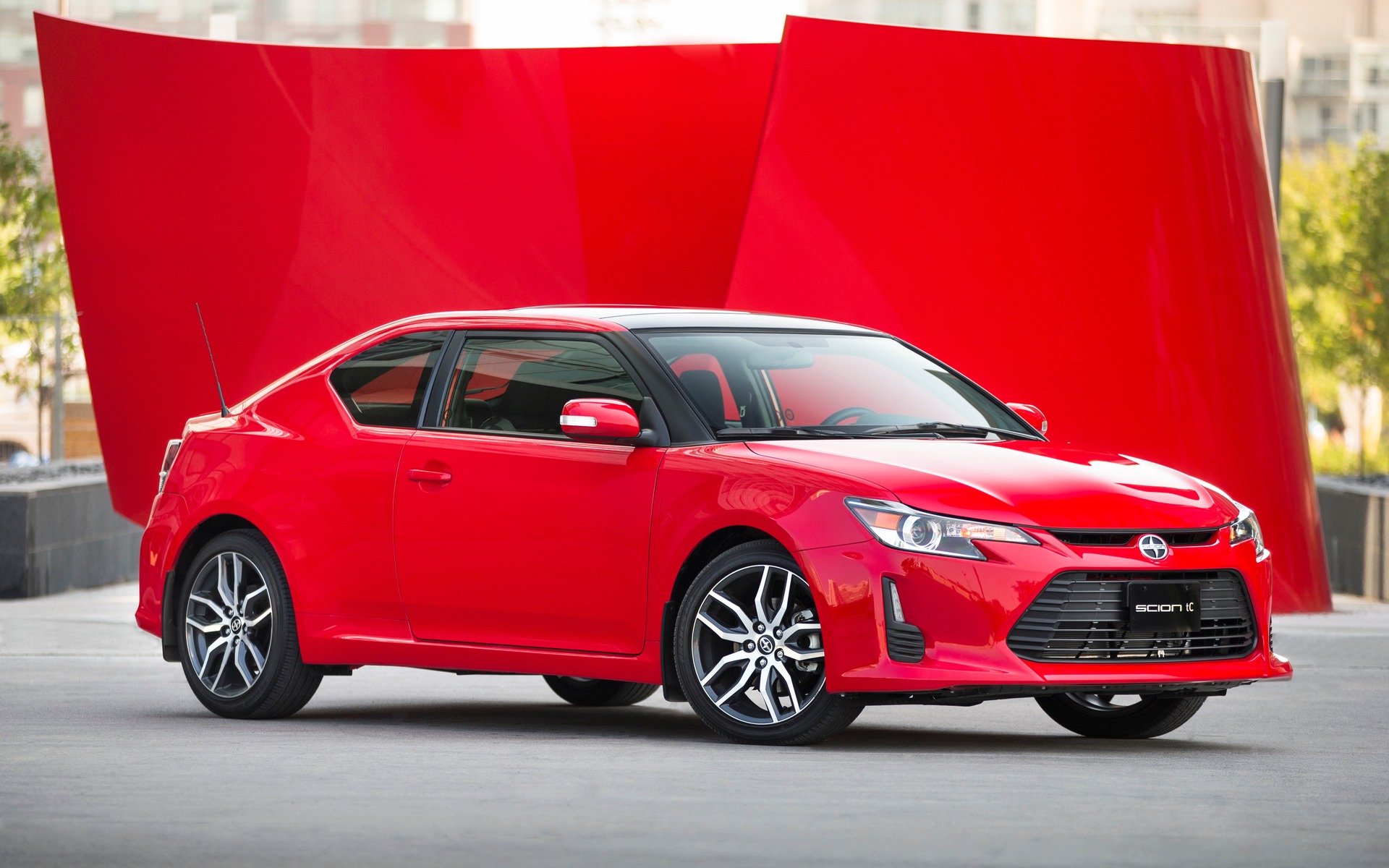2015 Scion tC: Overshadowed By The FR-S

| Strong points |
|
|---|---|
| Weak points |
|
Founded in 2002, Toyota's Scion division's goal was to target a younger demographic by selling less serious cars than those offered under the regular Toyota banner. The Japanese brand took the lifestyle choices of younger generations into consideration and produced numerous custom accessories for creating trendy vehicles. This was the polar opposite of what we were used to from Toyota, so they came up with the idea of launching a new division that wouldn't risk hurting the manufacturer's image.
After some initial success, Scion, which was only offered in certain U.S. states, gradually ran out of steam. It's not easy to bankroll an operation like this while keeping models fresh year after year. After all, Scion’s target clients don’t tend to be terribly comfortable financially.
Although today's Toyotas are much more inspiring, that wasn't the case back then—which is why we badly wanted Toyota to bring Scion to Canada too. That wish came true in 2010, much to the delight of many. At the time, we called the tC "the sportiest of the Toyotas", but that title no longer fits today.
Something new this year
Since the FR-S arrived on the scene, the tC has lost some of its lustre in comparison, as the newcomer is a much more accomplished sports car. The tC comes dressed as a sport coupe but its performance is none too intoxicating. Plus, its price isn't exactly a bargain compared to its rivals—in particular the less powerful but more affordable Hyundai Veloster.
To keep buyers interested, Scion revised its tC slightly this year. On the outside, the designers modified the front end with new elongated headlights and a hood that extends lower into the grille. In back, the new, more modern lights incorporate an LED strip while a FR-S-style black skirt under the bumper reinforces the similarities between the two vehicles. With its new 18-inch matte finish rims, the tC is a real looker.
Under the hood, Scion has brought back the 2.5-litre four-cylinder that develops one less horsepower (179) at a very high 6,000 rpm. That power and, more importantly, the 172 lbs.-ft. of torque remain superior versus the coupes offered by Kia, Hyundai and Honda. As for the transmission, power is sent to the front wheels by either a manual or an automatic gearbox. Modified for 2014, the automatic now selects lower and higher gears faster and includes a new system borrowed from the FR-S that automatically increases engine speed to match it to the gear ratio when downshifting.
Practical just the same
The tC's passenger compartment is a total departure from what we're accustomed to seeing in other Toyota vehicles, both for the layout and in terms of how modern the dashboard is overall. This is where the vehicle really seems long in the tooth. Unlike modern, completely integrated sound systems, the tC's seems like a throwback to the era when radios were modular and a standard size, which made it possible to simply replace it with a higher performance one. This represents a plus for those who miss those days and would like to easily transform their tC into a dance club on wheels. This year, the overall appearance has been improved with the use of new, soft, less cheap-looking materials.
In back, the tC features two relatively comfortable seats, more so at least than those found in the FR-S: the tC gets the edge for family needs. Although it looks like a sport coupe, the tC has a hatchback like a wagon that makes it very practical. Bigger objects can easily be carried within, despite its rather high floor. When the need arises, the backseats can be folded down to increase the cargo capacity even more. Thus, there's no problem bringing along all the family's trappings.
On the road
We liked the longer, low driving position, and that’s not a description you’ll often hear in reference to Japanese cars. The constant complaint is that the seat is so high that your head practically touches the ceiling, but then again, it gives you the feeling of being in a real sports car. However, that's where the comparison ends: once you start the engine, the performance is reminiscent of that of a regular compact car. The 179 horsepower developed by the four-cylinder is sufficient for a pleasant, safe ride, but it's far from what you'd expect from a compact sports car.
It isn't very inviting to drive. Its steering is unresponsive and over-assisted and you feel the torque steer effect when you try to get a quick start on an uneven surface. The front end tends to pull from left to right. The engineers made a concerted effort to enhance handling by making the chassis more rigid and adding new stabilizer bars, and the suspension has been made a little more firm.
The tC's lack of power isn't all bad, as it means that the car is somewhat fuel efficient. If you're in the market for a sporty looking car and performance isn't your priority, the tC might be for you. Otherwise, for about $5,000 more, the FR-S is a much more interesting car.











